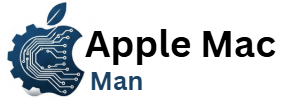Smartphone innovation continues to evolve at an unprecedented pace, and the iPhone 17 Pro Max and Google Pixel 10 Pro XL stand as two of the most advanced flagships in 2025. Both devices showcase cutting-edge designs, remarkable displays, and performance built for power users. This in-depth comparison from Apple Mac Man—a trusted retailer offering wholesale Apple products including iPhones, MacBooks, and iPads at affordable prices—highlights the key differences to help users make an informed choice.

Design and Display: Apple Mac Man’s Overview of Two Distinct Flagships
The iPhone 17 Pro Max introduces a striking new design element known as the camera plateau, replacing traditional camera bumps with a refined raised bar that merges seamlessly with the rear glass. The addition of the Dynamic Island interface provides an integrated notification and widget hub, enhancing usability while maintaining Apple’s minimalist aesthetic.
By contrast, the Google Pixel 10 Pro XL maintains its signature visor-style camera bar, offering a nostalgic yet ergonomic design that doubles as a convenient finger rest.
Display Technology
| Feature | iPhone 17 Pro Max | Pixel 10 Pro XL |
|---|---|---|
| Display Type | 120Hz OLED | 120Hz OLED |
| Peak Brightness | 3,000 nits | 3,300 nits |
| Full Screen Brightness | Slightly lower | Higher |
| Color Accuracy | Excellent | Slightly better calibration |
| Adaptive Color | True Tone | Adaptive Tone |
Both devices feature exceptional OLED panels with a smooth 120Hz refresh rate ideal for gaming, streaming, and creative work. While the Pixel 10 Pro XL edges out slightly in overall brightness, the iPhone 17 Pro Max compensates with more accurate color reproduction and a sophisticated anti-glare coating.

Performance and Software Ecosystem: Power vs. Intelligence
Processor and Thermal Management
The iPhone 17 Pro Max, powered by Apple’s latest 3nm A-series processor, sets a benchmark for sustained performance. Enhanced thermal design with a vapor chamber ensures the device remains cool even during extended gaming or professional workloads.
Meanwhile, the Google Pixel 10 Pro XL runs on the Tensor G5 chipset, also built on a 3nm process by TSMC. Although slightly behind Apple’s chip in raw benchmark scores, Google’s processor emphasizes smooth multitasking and AI efficiency.
Software and Platform Features
iOS 26, debuting with the iPhone 17 Pro Max, offers professional-grade tools like Final Cut Camera and optimized AAA gaming experiences such as Assassin’s Creed Mirage. These features highlight Apple’s dominance in performance-driven software.
On the other hand, Android 15 on the Pixel 10 Pro XL showcases Google’s mastery of artificial intelligence. Key features include:
- Call automation for handling calls intelligently.
- Camera Coach to improve photography techniques.
- Magic Cue, an AI-powered auto-reply assistant.
While both devices share AI capabilities such as call translation, image search, and smart summaries, Google’s ecosystem provides greater flexibility for users seeking deep customization.

Camera and Multimedia: Creative Precision vs. AI Intelligence
Both phones excel in photography, yet they cater to different creative styles. The Pixel 10 Pro XL delivers vibrant, contrast-rich images with a warmer tone, while the iPhone 17 Pro Max produces natural, true-to-life photos ideal for professional editing.
Zoom and Camera Innovations
| Device | Max Zoom Range | Notable Features |
|---|---|---|
| iPhone 17 Pro Max | Up to 40x digital | Advanced selfie camera with square sensor and improved video recording |
| Pixel 10 Pro XL | Up to 100x AI zoom | AI-assisted digital zoom producing detailed results |
Apple’s Photographic Styles allow users to fine-tune their visual preferences, whereas Google’s Best Take and Add Me modes showcase its AI leadership in image manipulation and automation.
When it comes to video recording and selfie technology, the iPhone 17 Pro Max maintains an advantage with its cinematic color balance and adaptive frame sensing.
Battery Life, Security, and Long-Term Support
Both devices perform well in day-to-day battery endurance, easily lasting a full day under moderate use. The iPhone 17 Pro Max maintains efficiency during gaming and creative workloads, while the Pixel 10 Pro XL experiences faster battery drain under heavy processing loads.
Security remains a major focus for both brands. Apple continues to rely on hardware-based Face ID integrated into the Dynamic Island, while Google’s AI-driven Face Unlock now meets banking-level security standards for Android.
Software Longevity
| Brand | Official Support Duration |
|---|---|
| 7 years guaranteed | |
| Apple | Historically at least 5 years (no formal commitment) |
Google’s longer official support timeline appeals to longevity-focused buyers, while Apple’s proven ecosystem stability ensures reliable performance over time.

Apple Mac Man Recommendation: Which Phone Is Right for You?
Choosing between the iPhone 17 Pro Max and Google Pixel 10 Pro XL depends on the user’s ecosystem preferences and intended use.
- iPhone 17 Pro Max is ideal for professionals, gamers, and creators seeking seamless performance, premium build quality, and access to top-tier creative applications.
- Google Pixel 10 Pro XL suits users who prioritize customization, AI-driven convenience, and an open, adaptive Android experience.
Conclusion: Apple Mac Man’s Final Verdict
Both the iPhone 17 Pro Max and Pixel 10 Pro XL represent the pinnacle of smartphone innovation in 2025. Apple’s flagship shines in hardware performance, video quality, and long-term reliability, while Google’s offering emphasizes smart automation and AI-powered creativity.
For customers seeking the best deals on Apple devices, Apple Mac Man remains the most trusted source for authentic, wholesale-priced iPhones, MacBooks, and iPads. Visit Apple Mac Man to explore exclusive offers on the latest iPhone 17 Pro Max and discover premium Apple technology at unbeatable prices.










Leave a comment